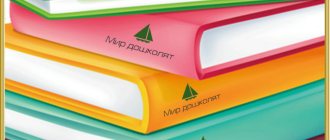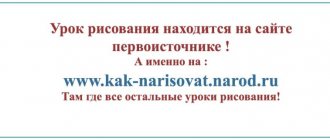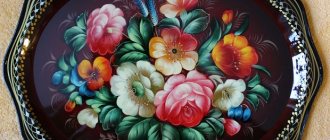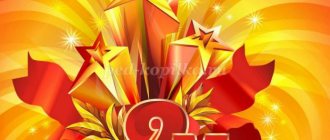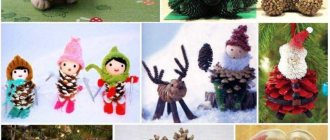Copper tale
You can't tell by looking that Copper is that old. But they knew her back in the Stone Age - just as red and ruddy as she is now.
They didn't know any other metals. And they knew Copper. And they used it on the farm. Jugs were made from it. Bowls. Knives. This is in the Stone Age!
That’s why it ended, the Stone Age, because too much copper had accumulated in it. And when too much bronze accumulated in the Copper Age, the Copper Age ended and the Bronze Age began (although Bronze was the same Copper, only combined with Tin). And then, when too much iron accumulated in the Bronze Age, the Iron Age replaced the Bronze Age.
That's how it all went down.
I can’t even believe that so much time has passed, that the Copper Age has passed a long time ago...
Because Copper is now in mechanical engineering, which was not in the Copper Age, and in electrical engineering, which was not in the Copper Age... And in televisions, unknown to the Copper Age, and in airplanes, and in space rockets - Copper, Copper is everywhere...
So old, but she keeps up with everything.
Clay tale
There lived Hard Clay in the world, and no one was happy with her. It was dry, callous, and would rather crack than do any good to anyone.
Water came to the Solid Clay.
“You need to be gentler,” he says. Only then can you do good.
Water touched Clay and it immediately became softer. It was so softened by the Water that they even made a mug out of it.
“You and I will give people water together,” says Water. “In the meantime, I’m evaporating.”
“We’ll be together, but you’re disappearing?”
“Bye,” says Water. “To give people something to drink, the mug must be hard and waterproof.” And with me you will not become hard. Therefore - goodbye!
“You said you have to be gentle to do good.” And now you say: you need to be firm...
“That’s right,” said Water. “While you’re just Clay, you need to be soft so that something can be molded out of you.” And when it becomes a mug, then firmness is needed.
The water evaporated, and Clay thought.
It turns out that it is not so easy to do good. To do good on earth, you need to know well when to be soft and when to be hard.
Aluminum fairy tale
There was a time when metals could not fly. They are too heavy, it is difficult for them to get off the ground
At that time, people on Earth did not yet know anything about Aluminum. Although he was already there and met at every step.
There are such invisible heroes who are not noticeable to anyone, Rock will not look at them carefully. And when they look, they see - and immediately they will thunder throughout the whole world.
This is how the metal Aluminum thundered in the last century.
But thundering, of course, is easier than flying. For flights, not only lightness, but also hardness is needed. Aluminum lacked hardness.
“Connect him with me,” suggested Copper. “With me, he will become hard in no time.”
- With you? But you yourself are soft!
- I’m the soft one, while I’m alone. I'm not like that when it comes to rafting. Remember Bronze, Brass...
Combined Copper with Aluminum. The result was Dural, a hard alloy. Both light and hard.
This is what airplanes were built from. And on these planes work was found for many metals that previously, before Aluminum, could not fly.
It is important that someone flies first. And everyone else will follow him.
Conversation with children about objects of living and inanimate nature.
The following objects are on the table: flowers, stone, doll.
IN.
Today we will talk again about living and inanimate nature. Tell me which of these objects is alive and which is not. (Children's answers.) Why do you think that a flower is living nature. Does stone belong to nature? What kind of nature is this? Why is a doll not nature? Guys, take one picture at a time, look at what is drawn on it, and if it is a living object, put the picture near a flower, if it is inanimate nature - near a stone, and if it is not nature, then put it near a doll. (Children look at the cards, the teacher checks with the children whether the task is completed correctly.) The teacher invites the children to sit on chairs.
Conversation with children on the physical map of their country
Q. Let's remember what nature is? A wonderful writer and nature lover M. Prishvin wrote: “We are the masters of our nature and for us it is a storehouse of the sun with great treasures of life. Fish is water, birds are air, animals are forests and mountains, and man needs a homeland. And protecting nature means protecting the Motherland.” What is the name of our Motherland? Look at the map, what country is shown on it?
Our country is not that big anymore, but it has a lot of wealth. You see how much green there is on the map, which means there are a lot of green forests. Blue color shows rivers and lakes. There are a lot of fish in the forest, and there are a lot of fish in the rivers and lakes. But there is also wealth inside the earth, in its depths. These riches are called minerals. These minerals are searched and found by people whose profession is geologists.
Imagine that we are geologists, and we are in a laboratory, and we will study minerals. A laboratory is where they examine, study, research various objects, and do experiments. Let's go to the tables, our laboratory will be there. (Children sit at tables.)
Experiments with children with minerals.
Q. The guys brought the minerals with a train, although it is a toy, the minerals are real. In the first carriage there are white pebbles. Take them in your hands and tell me what they are? (Chalk.) What is chalk for? Where did he come from? It turns out that long ago, where we live, there was a sea in which there were many snails in shells, time passed, the snails died, and their shells fell to the bottom of the sea. They were covered with sand and silt, their shells turned to chalk. People learned to extract chalk and use it. Doctors use purified chalk to give people healthy teeth and strong bones. This chalk is called calcium glucanate. Taste the tablet.
Let's try what's in the second trailer. (Salt.) Salt is also a mineral; it is mined in our state. At first it is called stone. Why do you think? And then it is ground, cleaned, and it becomes food. Why is it called food? Salt is mined near cities such as... (shows these cities on the map). but remember that we are geologists, and they are looking for minerals in the mountains, swamps, forests, overcoming any obstacles.
Children sit in front of the board, the teacher shows the cities and draws attention to the symbol on the map of oil.
IN.
Look how many black triangles there are, they show that in these places, deep underground, a river flows, the water in which can burn. Geologists found this river and drove a steel pipe into the ground. (Show picture.) A fountain of black water, which is called oil, came out of the pipe. (Showing oil in a test tube.) It is thick and burns. In special factories, petroleum is used to make gasoline, kerosene, asphalt resin, plastic and many other things. What is gasoline and kerosene used for, and what is made from plastic?
The children are invited to take a cup from the tray and drink some water. What is this? (Mineral water.) Mineral water is very useful for humans, and it is also found in the depths of our earth. We have many more minerals, such as..., but we will talk about them in the next lesson.
